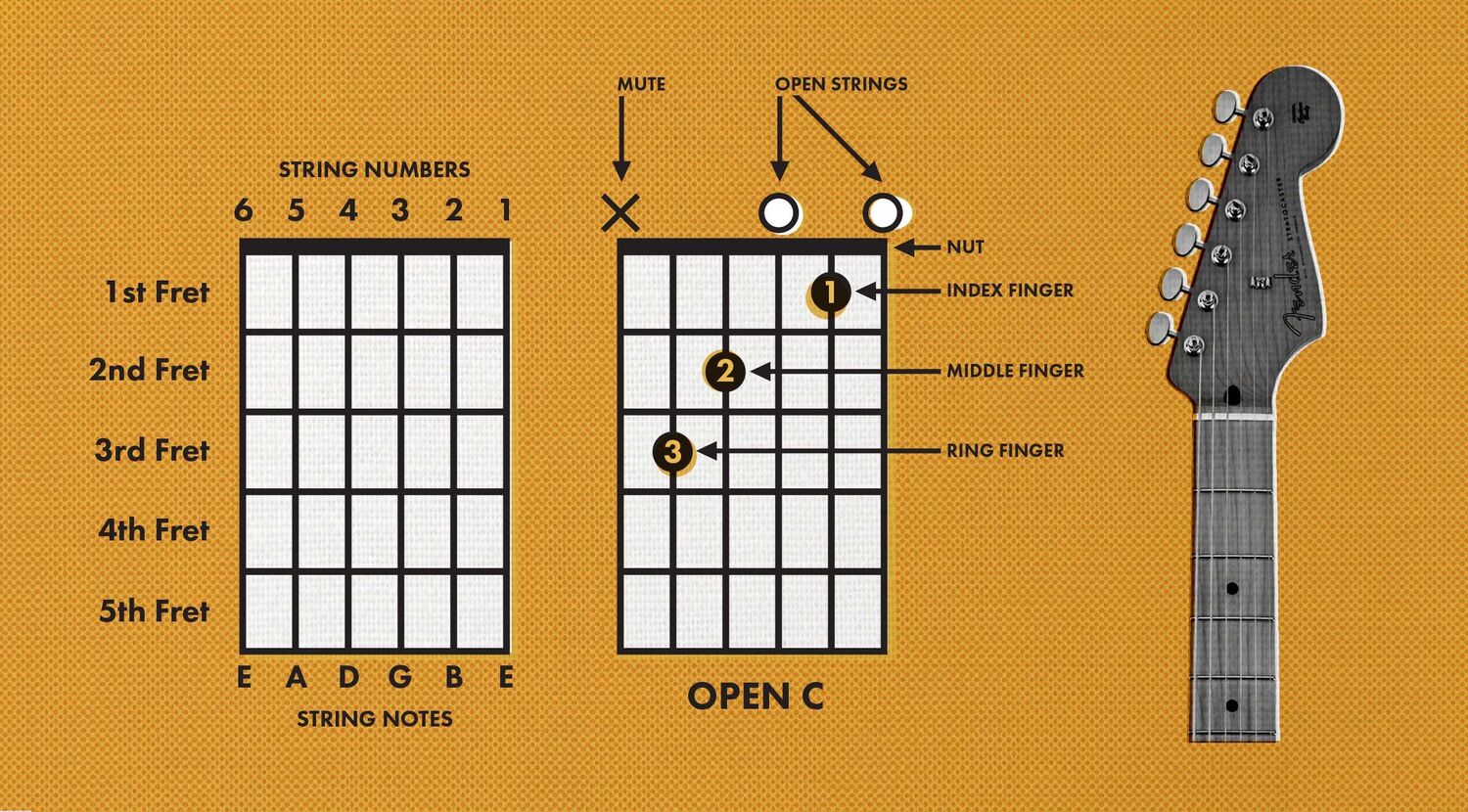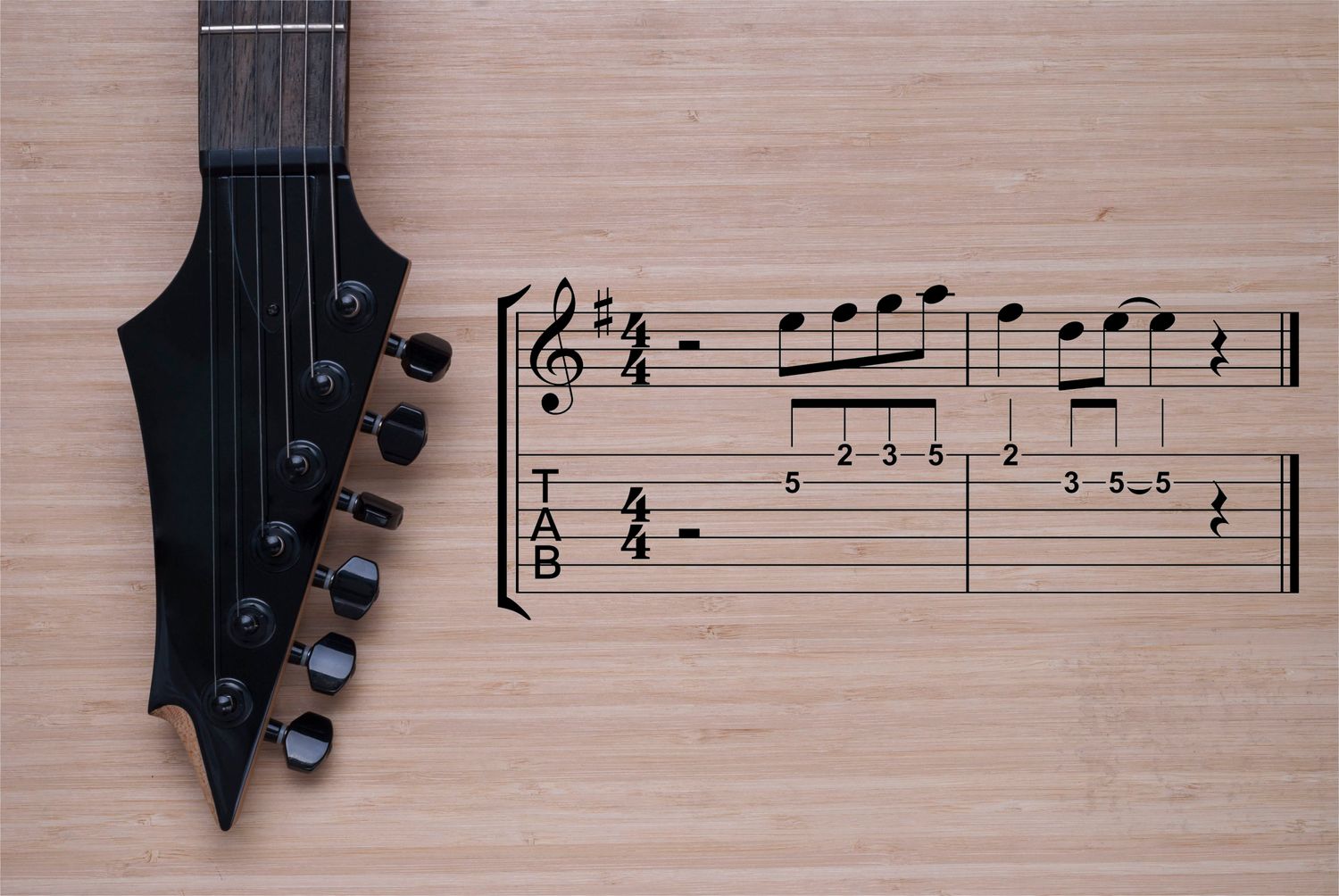Home>Instruments>Guitar>How To Read Scales On The Guitar


Guitar
How To Read Scales On The Guitar
Published: February 14, 2024
Learn how to read guitar scales and improve your playing with our comprehensive guide. Master the fretboard and enhance your guitar skills today!
(Many of the links in this article redirect to a specific reviewed product. Your purchase of these products through affiliate links helps to generate commission for AudioLover.com, at no extra cost. Learn more)
Table of Contents
Introduction
Playing the guitar is a rewarding and fulfilling endeavor, and understanding scales is crucial for any aspiring guitarist. Scales form the foundation of melodies, solos, and improvisation, making them an essential aspect of guitar playing. In this comprehensive guide, we will delve into the art of reading scales on the guitar, providing valuable insights and practical tips to help you master this fundamental skill.
Whether you're a beginner eager to unlock the mysteries of guitar scales or an intermediate player looking to enhance your knowledge, this article is designed to cater to your learning needs. By the end of this guide, you'll have a solid grasp of how to read scales on the guitar, empowering you to explore new musical horizons and express yourself with confidence.
Understanding the intricacies of guitar scales is akin to unraveling the language of music. It opens up a world of possibilities, allowing you to communicate emotions and ideas through your instrument. As we embark on this enlightening journey, we'll demystify the basics of guitar scales, explore the nuances of note reading on the fretboard, and delve into the major and minor scale patterns. Additionally, we'll discuss effective strategies for practicing scale patterns, enabling you to refine your technique and elevate your playing to new heights.
So, grab your guitar, tune the strings, and get ready to embark on a melodic adventure. Whether you're drawn to the soulful sounds of blues, the electrifying energy of rock, or the timeless elegance of classical music, the knowledge of scales is your gateway to musical fluency. Let's dive into the enchanting world of guitar scales and unravel the secrets that await on the fretboard.
Understanding the Basics of Guitar Scales
Before delving into the intricacies of reading scales on the guitar, it’s essential to grasp the fundamental concepts that underpin this musical framework. In the context of music theory, a scale is a sequence of notes arranged in ascending or descending order, each with a specific pitch and frequency. These notes form the building blocks of melodies and harmonies, providing the raw material for musical expression.
On the guitar, scales are typically visualized as a series of consecutive notes played on the fretboard. Each scale has a distinct pattern and structure, which influences its sound and emotional character. Understanding the construction of scales is pivotal for navigating the fretboard with confidence and developing a keen sense of musical phrasing.
One of the most prevalent scales in Western music is the diatonic scale, which consists of seven unique notes. These notes are derived from a specific key signature and are arranged in a sequence of whole steps and half steps. The diatonic scale serves as the foundation for various modes and tonalities, making it a cornerstone of musical composition and improvisation.
As a guitarist, familiarizing yourself with the diatonic scale and its modal derivatives can significantly enhance your musical vocabulary and improvisational prowess. Moreover, understanding the intervals within a scale – such as the root, third, fifth, and so on – is crucial for comprehending the harmonic structure of melodies and chord progressions.
In essence, the basics of guitar scales encompass a melodic roadmap that guides your musical journey. By internalizing the patterns and intervals inherent to scales, you gain the freedom to express yourself fluently and melodically on the instrument. As we proceed, we’ll delve deeper into the practical aspects of reading and applying scales on the guitar, equipping you with the knowledge and skills to unlock the full potential of this foundational musical element.
Reading the Notes on the Guitar Fretboard
Mastering the art of reading notes on the guitar fretboard is a pivotal step in understanding scales and expanding your musical proficiency. The fretboard serves as the canvas upon which melodies and harmonies are painted, making it essential to familiarize yourself with its layout and notation system.
At its core, the guitar fretboard comprises a series of frets – the metal strips that divide the neck – and strings, each tuned to a specific pitch. The standard tuning for a six-string guitar, from lowest to highest pitch, is EADGBE. This foundational knowledge forms the basis for identifying and locating notes across the fretboard.
One effective method for learning the notes on the guitar fretboard is to memorize the natural notes – A, B, C, D, E, F, and G – along each string. By understanding the sequence of natural notes and their respective positions on the fretboard, you can navigate the instrument with precision and confidence. Additionally, familiarizing yourself with octave patterns and intervals facilitates seamless note identification and promotes a deeper understanding of musical structures.
Furthermore, the use of mnemonic devices and visual aids can aid in memorizing the notes on the fretboard. For instance, associating specific fretboard patterns with familiar shapes or landmarks can enhance recall and streamline the learning process. Additionally, leveraging online resources, such as interactive fretboard diagrams and mnemonic exercises, can provide valuable reinforcement in note recognition and fretboard navigation.
As you acquaint yourself with the notes on the guitar fretboard, it’s essential to cultivate a tactile and visual understanding of the instrument. Engaging in regular practice routines that involve identifying and playing individual notes across the fretboard fosters a deeper connection with the instrument and sharpens your musical acumen.
By honing your ability to read notes on the guitar fretboard, you lay a solid foundation for comprehending and interpreting scale patterns. This foundational knowledge forms the bedrock of melodic exploration and improvisation, empowering you to express yourself fluently and melodically on the guitar.
Learning the Major and Minor Scales
When delving into the realm of guitar scales, a fundamental understanding of the major and minor scales is paramount. These two scales form the cornerstone of Western music and serve as the basis for countless compositions across various genres. By mastering the major and minor scales, you gain a versatile toolkit for crafting melodies, improvising solos, and understanding the tonal fabric of music.
The major scale, often hailed for its uplifting and consonant qualities, comprises a sequence of seven notes arranged in a specific pattern of whole and half steps. This iconic scale is the bedrock of countless compositions and serves as a springboard for harmonic exploration and melodic expression. Understanding the structure and intervals of the major scale – such as the root, major second, major third, perfect fourth, perfect fifth, major sixth, and major seventh – is essential for harnessing its melodic potential on the guitar.
Conversely, the minor scale, with its evocative and introspective character, offers a contrasting palette of emotions and moods. The natural minor scale, also known as the Aeolian mode, embodies a melancholic allure and is widely utilized in genres such as blues, rock, and classical music. Familiarizing yourself with the intervals and tonal essence of the minor scale equips you with the tools to convey poignant emotions and craft soul-stirring melodies.
As a guitarist, immersing yourself in the study of major and minor scales unlocks a myriad of creative possibilities. By internalizing the distinct tonal qualities and fingerings associated with these scales, you cultivate a nuanced understanding of musical expression and phrasing. Moreover, recognizing the harmonic relationships between the major and minor scales lays the groundwork for harmonic analysis and compositional exploration.
Learning to play the major and minor scales across the fretboard not only enhances your technical proficiency but also nurtures a deeper connection with the instrument. By exploring different positions and fingerings for these scales, you expand your melodic vocabulary and develop a keen sense of fretboard navigation, empowering you to traverse the guitar with dexterity and musical finesse.
As we delve deeper into the intricate world of guitar scales, the mastery of major and minor scales will serve as a springboard for melodic exploration and improvisational fluency. Embrace the enchanting allure of these foundational scales, and unlock the boundless potential they hold for your musical journey.
Practicing Scale Patterns
Effective practice is the key to mastering scale patterns on the guitar. It involves a combination of focused repetition, technical precision, and musical exploration, all of which contribute to the development of fluency and proficiency in scale playing. Whether you’re delving into the realms of major, minor, pentatonic, or modal scales, dedicated practice routines can elevate your playing and deepen your understanding of musical structures.
One approach to practicing scale patterns involves starting with a slow and deliberate tempo, focusing on precision and clarity in each note. As you internalize the fingerings and note sequences, gradually increase the tempo while maintaining accuracy and control. This incremental approach allows for the gradual assimilation of scale patterns into muscle memory, fostering a seamless and fluid execution of melodic phrases.
Furthermore, incorporating varied rhythmic patterns and articulations into scale practice can enhance your musical dexterity and phrasing. Experimenting with techniques such as legato, alternate picking, and string skipping infuses your scale playing with dynamic expression and rhythmic vitality. This multifaceted approach not only hones your technical prowess but also imbues your playing with a sense of musicality and nuance.
Exploring different positions and fingerings for scale patterns across the fretboard is essential for developing a comprehensive command of the instrument. By transposing scale patterns to various keys and positions, you broaden your melodic vocabulary and cultivate a deeper understanding of music theory and fretboard navigation. This versatility empowers you to traverse the guitar with agility and creativity, enabling seamless transitions between different tonalities and musical contexts.
Moreover, integrating scale patterns into musical contexts, such as backing tracks or improvisational settings, fosters a holistic understanding of their application and relevance. Engaging in improvisational sessions and collaborative musical endeavors allows you to apply scale patterns in real-time musical scenarios, honing your ability to craft compelling melodies and solos within a musical framework.
As you embark on your journey of practicing scale patterns, it’s essential to approach each practice session with focus, intention, and a spirit of musical exploration. Embrace the nuances of each scale, internalize its unique characteristics, and infuse your playing with creativity and expression. Through dedicated and mindful practice, you’ll unravel the intricacies of scale patterns and harness their melodic potential to enrich your musical repertoire.
Conclusion
Congratulations on embarking on this enlightening journey into the realm of guitar scales. Throughout this comprehensive guide, we’ve unraveled the intricacies of reading scales on the guitar, providing valuable insights and practical tips to enhance your musical proficiency. By understanding the basics of guitar scales, reading notes on the guitar fretboard, mastering major and minor scales, and practicing scale patterns, you’ve laid a solid foundation for melodic exploration and expressive playing.
As you continue to delve into the enchanting world of guitar scales, remember that patience, dedication, and a spirit of musical curiosity are your greatest allies. Embrace the process of learning and allow yourself the freedom to explore the vast landscape of scales and their melodic potential. Whether you’re drawn to the evocative allure of minor scales or the uplifting resonance of major scales, each scale offers a unique palette of emotions and musical expressions to enrich your playing.
Furthermore, as you navigate the fretboard and internalize scale patterns, remember that musical fluency is a journey of continual growth and discovery. Embrace the joy of experimenting with different scales, crafting melodic phrases, and infusing your playing with personal expression. Your unique musical voice is waiting to be unleashed through the language of scales, and each note resonates with the potential to convey your emotions and ideas.
Lastly, as you practice scale patterns and immerse yourself in the art of scale playing, cherish the moments of musical exploration and self-discovery. Celebrate the small victories, relish the melodic tapestries you weave, and allow the language of scales to become an extension of your creative spirit. Whether you’re practicing in solitude, jamming with fellow musicians, or performing on stage, let the enchanting allure of guitar scales guide your musical odyssey.
With each note you play and each scale you explore, may your musical journey be filled with inspiration, growth, and the boundless joy of artistic expression. The language of guitar scales is a timeless melody waiting to be composed by your fingertips, and the fretboard is a canvas for your musical narratives. Embrace the enchanting world of guitar scales, and let your melodic odyssey unfold with passion and creativity.











